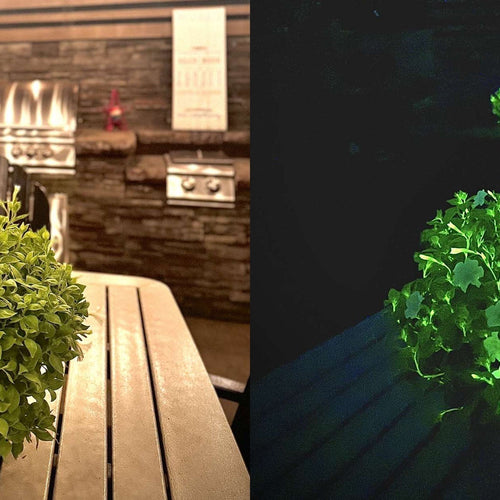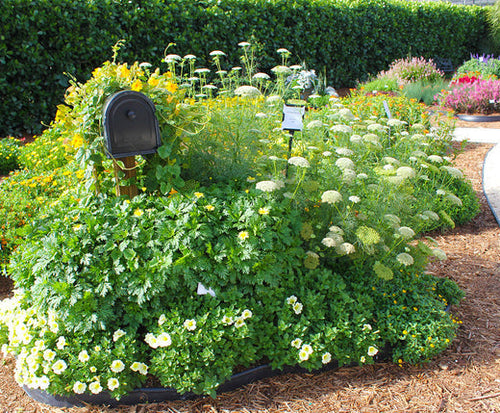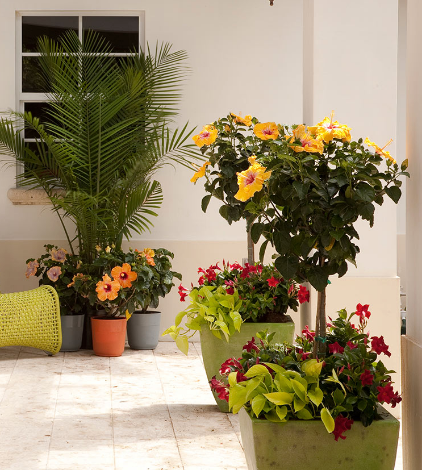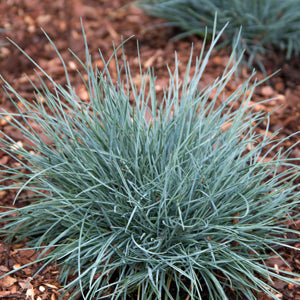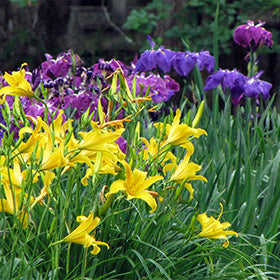
By Doug Jimerson It’s easy to create a garden path that’s as beautiful as it is practical. Just remember to consider your needs before you start construction. --Do you want a path that allows you to take a leisurely stroll through your garden? --Do you need something more practical that can handle heavier traffic? --Do you live in a northern climate where snow removal is necessary? --Do you want a formal or informal look? All these questions impact how you will design your path. Here are some tips to help you get started creating the garden path of your dreams.

1. Start With An Outline Use a garden hose to outline where you want your path to go. It’s a lot easier to move a hose around then it is to change direction once you start construction.
2. Make It Wide Enough Make your garden path at least 4 feet wide (left). Two people should be able to walk comfortably side by side on the path. A wider path will also allow wheelbarrows, lawn mowers, and snow blowers to pass easily.
3. Add Some Curves Include a few, subtle curves in your path. A slightly meandering path adds interest and creates a sense of relaxation. But remember to keep it simple. A path that winds around too much is more annoying than it is helpful.
4. Choose Appropriate Materials Choose paving materials that are appropriate for how you plan to use your path. For example, loose materials such as pea gravel, shredded bark, or pine straw are gorgeous, inexpensive paving materials for cottage style gardens, but are not practical if you live in the North and need to shovel snow. For high traffic areas in any region, choose solid materials such as concrete, brick, stepping stones, or concrete pavers.

5. Add Lights Incorporate lighting (left) if you plan on using your path after dark. Solar or low voltage out door lights should be placed 6 to 8 feet apart. Your goal is to light your path for safe passage after the sun goes down, not transform it into an airport runway.
6. Have Your Path Lead Somewhere Focal points positioned at the end of your path help draw the eye up, providing a visual clue to the destination. Focal points can include fountains, garden benches, arbors, or large containers.
7. Choreograph Color For reliable color, depend on perennial plants to flank your garden path. Here are 20 of our favorites: Lavender is a fragrant classic that prefers sun and sandy soil. Cranesbill geranium is super hardy and blooms all summer with little care. Perennial dianthus offers fragrant blooms that will perfume your path.
Ajuga forms a low-growing solid mat of color that chokes out weeds. Hostas in small- and medium-size varieties make great edging plants. Coreopsis lures colorful butterflies to your path. Creeping Jenny is as tough as nails, offering pretty chartreuse foliage. Daylily (top photo) looks handsome even when not in bloom. Hens and chicks are drought tolerant and hardy. Japanese painted fern adds color to shady pathways. Lamb’s ear (left) adds textural interest with its fuzzy silver foliage. Lamium has colorful leaves and grows quickly in the shade. Liriope is a Southern favorite with pretty blooms. Creeping phlox flowers early in the spring. Mondo grass has tight clumps of shiny leaves. Pachysandra grows thick enough to choke out weeds. Pink muhly grass develops pink flower stalks in the fall. Sedum is available in many sizes and colors. Vinca provides pretty leaves for dark places. Viola is a cheerful bloomer for cool climates.






